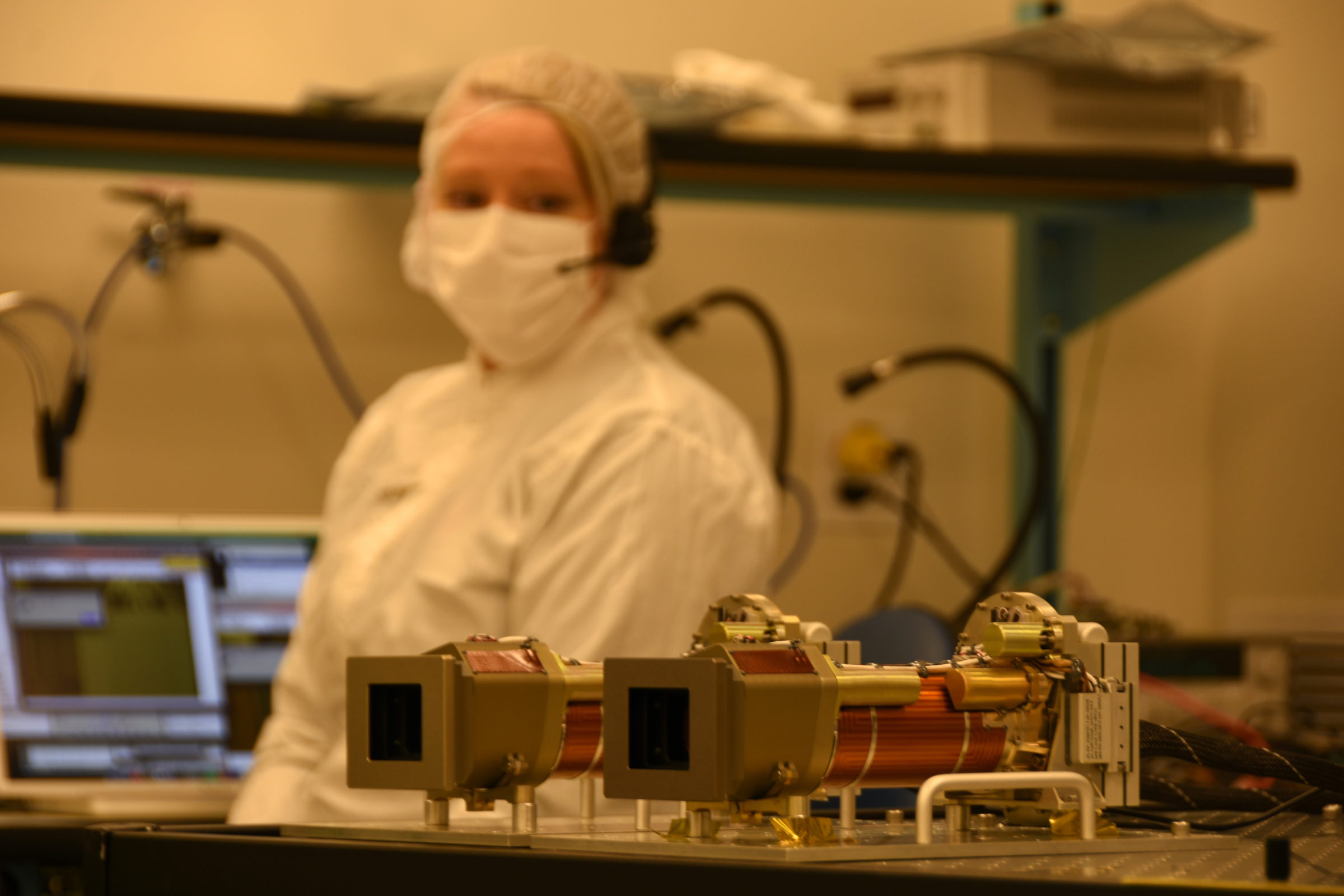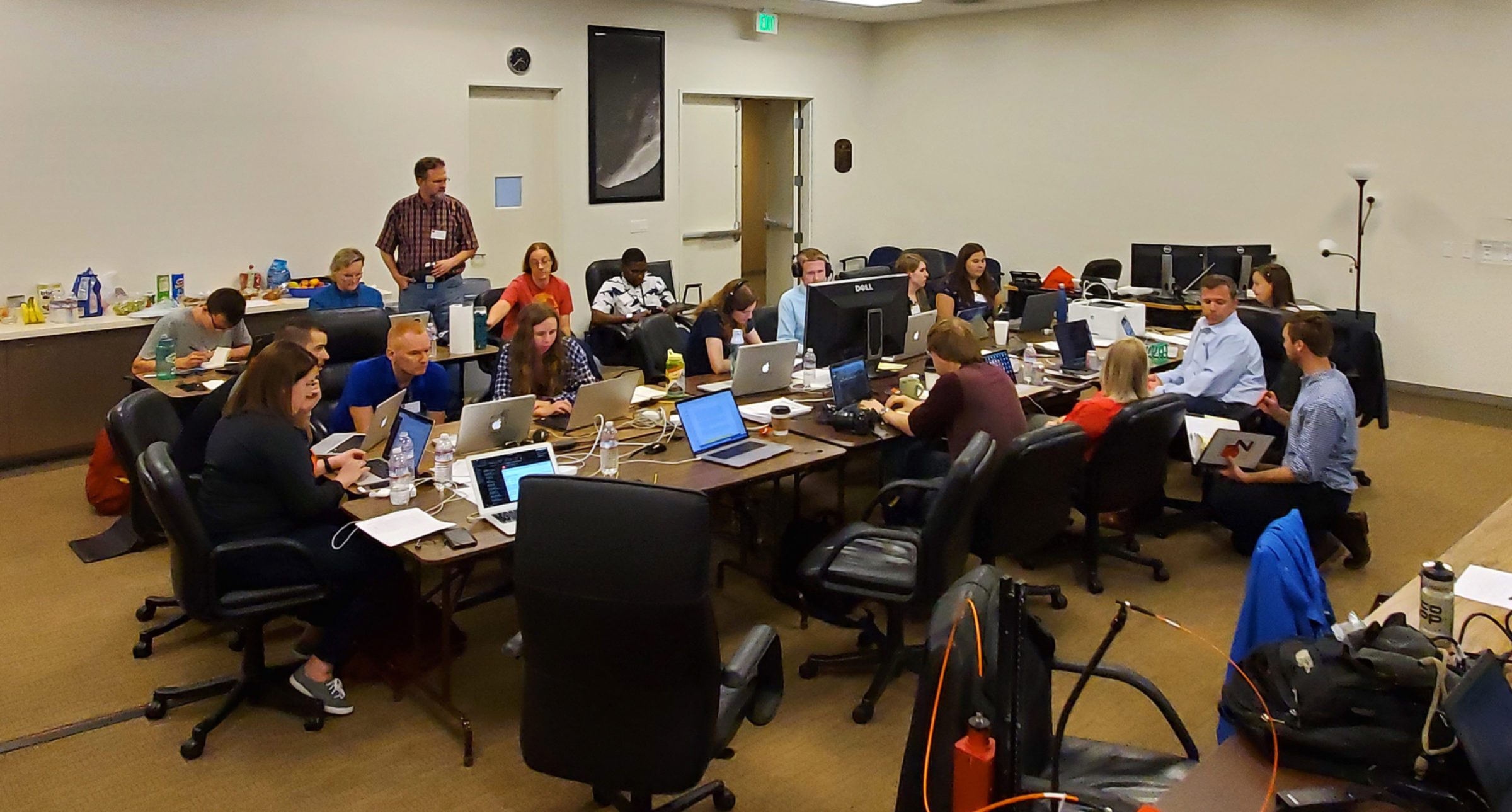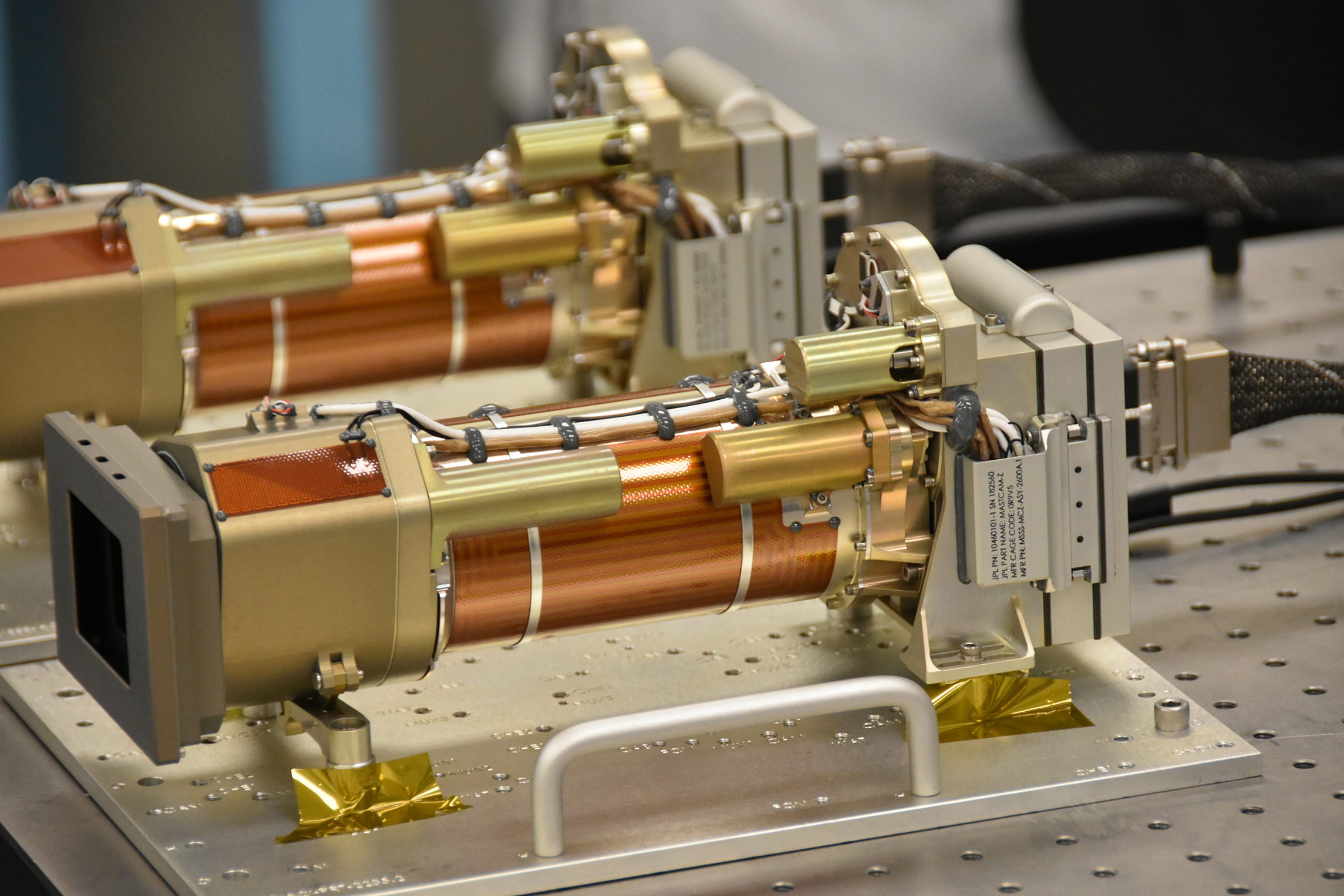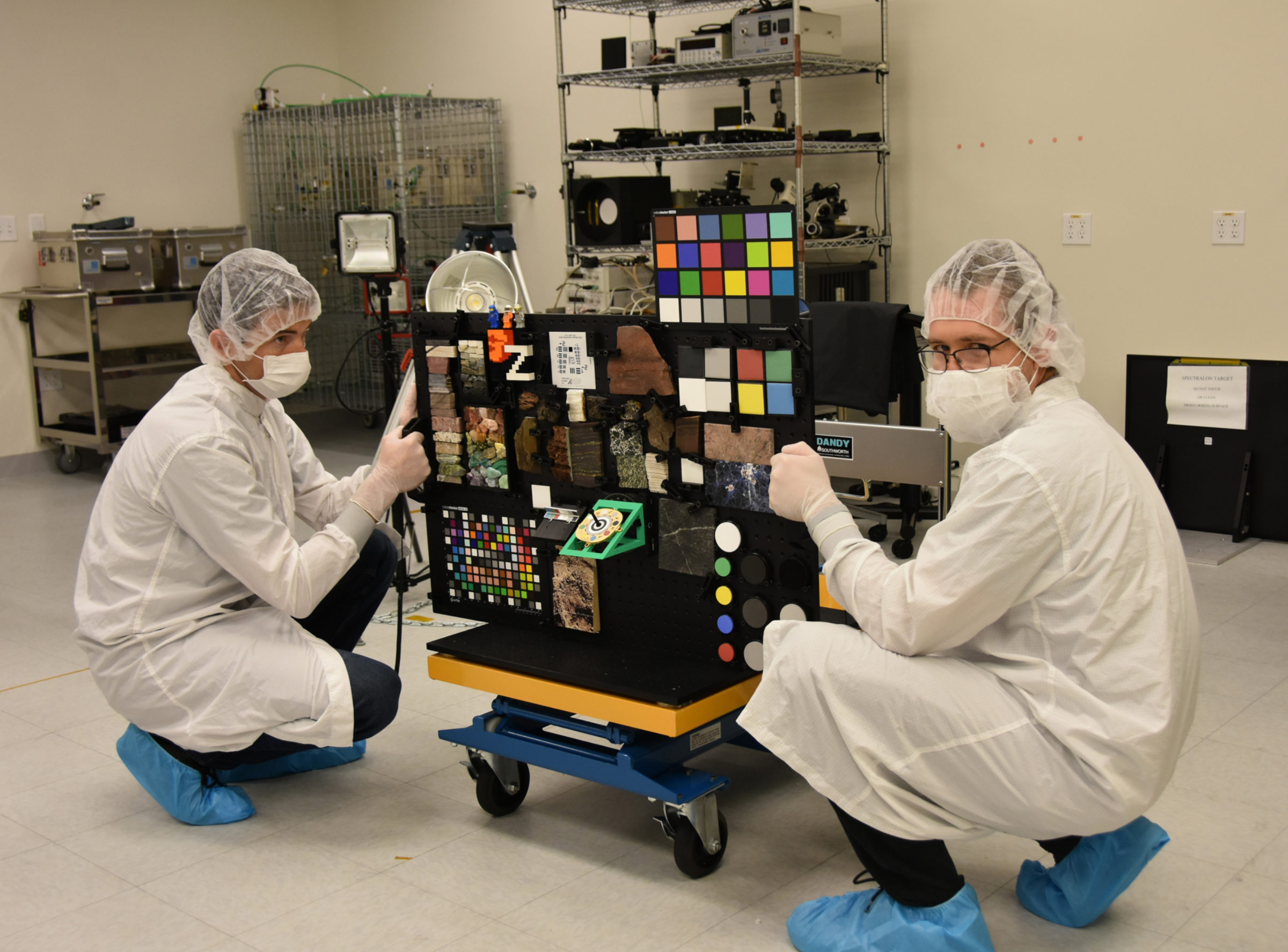Tina Seeger • Jun 04, 2019
How to Send a Camera to Mars
Calibrating the Mars 2020 Rover Mastcam-Z Cameras
It’s midnight. I glance around the room at my teammates. Six of us blink away fatigue as we repetitively issue commands to each other, recording and executing scripts that unfurl across many computer screens. The voices that echo in my headset are my only link to three teammates who carefully maneuver around our precious cameras in a cleanroom on the other side of the wall. Glancing at my watch, I’m startled to see we’ve been steadily working our way through this test for more than two hours without pause, sustained by adrenaline and the momentum of the team. And, I suppose, coffee. Everyone stretches and sighs as they turn away from their screens and come up for air. Something has gone wrong, again.

I’m no stranger to the amount of work that goes into operating a robot on another planet. Experience working with the Curiosity rover has shown me that it takes an extremely talented, well-oiled machine of a team to accomplish all that Curiosity has done. However, I had never considered all the work it takes to send a rover to Mars. The next Martian explorer, Mars 2020, currently exists as a robotic skeleton at NASA’s Jet Propulsion Laboratory. Teams across the world are working diligently to construct the instruments that will adorn the rover, inside and out, and thereby give it the tools it needs to explore. My favorite instrument, Mastcam-Z, is a pair of zoomable cameras that will sprout from the rover’s mast. They are the rover’s science cameras, specially designed to see Mars both in visible light wavelengths (where Mars rocks and dust mostly look red) and in near infrared wavelengths (where rocks and sediments appear much more varied).
Before the cameras can be installed on the rover, they have to be constructed to extremely tight specifications, and then calibrated. I won’t detail the long and arduous build process because Jim Bell already described it here. It took a lot longer to get to the science calibration (the last step in the testing process) than some on the team expected because of many of the kinds of typical last-minute tweaks and fixes often needed once you start testing complex instruments designed for harsh environments like the surface of Mars.
Earlier this month, the cameras were finally ready for calibration. The calibration team—a subset of the full Mastcam-Z team that includes scientists, engineers, operations specialists, and students—descended on Malin Space Science Systems in San Diego to perform an impressive array of meticulously crafted tests. The calibration team worked during morning and night shifts to run as many tests as possible within the time available before the cameras had to be delivered to JPL. On one of my night shifts, we took more than 100 images of a poster printed with a semi-random pattern of dots, while a technician in the clean room moved the poster a few centimeters after every. single. frame. It was precisely as tedious as it sounds, but soon evolved into a sort of dance: technicians adjusted the poster, camera operators commanded frames to be captured, documentarians recorded parameters, and data validators (that was me!) checked the images that Mastcam-Z took to verify the quality of the data while the technicians adjusted the poster for the next frame. Then we did it again. And again. And again.

Focus on Mastcam-Z This animation consists of images taken by the left Mastcam-Z flight camera during one of the 100 dot target tests. After each test, the target was moved to a different distance from the cameras. Mastcam-Z was swept through its full zoom range. By imaging this target at so many positions and distances while varying focus and zoom, the Mastcam-Z team will precisely understand the geometric distortion introduced by the Mastcam-Z optics into its images and measure the effective focal length and field of view at each focus and zoom position. MSSS Operations Engineer Jason Van Beek (left) and Cornell Mastcam-Z graduate student collaborator Paul Corlies (right) were the cleanroom technicians for this testing.Video: ASU/MSSS
I was struck by how well this group of relative strangers functioned as a team. Spirits were remarkably high on the night team as we embraced tedium well past bedtime. Though it was exhausting and intense, everyone’s commitment to focus and ensure that all tests were accomplished safely and carefully thoroughly impressed me. Things were not always smooth—in fact, hitches interrupted almost every test—but the team’s ability to step back, assess, and mitigate with good humor always prevailed. In the end, after 13 straight days of work taking more than 45,000 images between both cameras, we got all the test data we needed.

It was humbling to work with such finely crafted instruments, knowing that they’re going to get strapped to a robot and launched into space. I will never get over how fundamentally cool that is. My colleagues on this project poured countless hours into designing and executing a comprehensive calibration plan to ensure we understand precisely how Mastcam-Z will behave on Mars.
Mastcam-Z is just one of Mars 2020’s many instruments. Assembling a rover is an intense labor of love, requiring years of collaboration across disciplines long before the fun of exploration is possible. It was an honor to play a small part in this process, and after staring at pictures of dots until my weary eyes nearly crossed, I can’t wait for Mastcam-Z to capture the rover’s first views of Jezero crater when it finally opens its eyes on Mars.



Support our core enterprises
Your support powers our mission to explore worlds, find life, and defend Earth. You make all the difference when you make a gift. Give today!
Donate

 Explore Worlds
Explore Worlds Find Life
Find Life Defend Earth
Defend Earth

